When it comes to dealing with summer heat, finding a portable air conditioner that actually delivers on its promises can be a game-changer. If you’re on the fence about whether a Hisense portable air conditioner is the right choice, let me break it down for you.
From cooling efficiency to usability, maintenance, and everything in between, here’s my take on why the Hisense AC might be the summer solution you’ve been looking for.
My Experience With Hisense Portable Air Conditioner
Using the Hisense AP0522CR1W Portable Air Conditioner has been a refreshing change during hot days. Setting it up was straightforward, though I did spend a moment figuring out the adhesive foam and screws that come with the window kit (ultimately, I found the kit works fine without them).
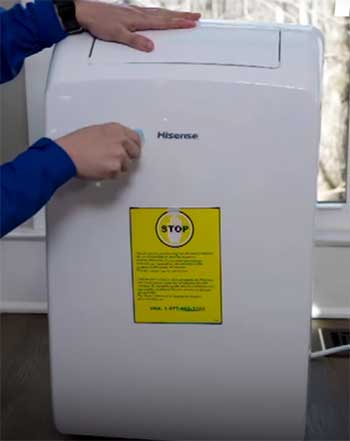
Within minutes of powering it on, I noticed a drop in temperature – around 9°F in 10 minutes in my small room.
It’s impressive for a 5,000 BTU unit, especially in a confined space like a bedroom or home office.
The drain-free design is incredibly convenient.
Unlike other portable ACs, I didn’t have to worry about draining any water manually, even on humid days, which makes it truly low-maintenance.
I’m particularly impressed with the remote control; it’s handy to be able to adjust the settings without getting up, whether switching modes between cooling, fan, or dehumidifying, depending on the day’s needs.
As for noise, it’s noticeable but tolerable. I’d compare it to a soft hum that blends into the background, especially if I have music or a TV on. It’s certainly quiet enough to sleep with, which isn’t always the case with portable AC units.
I do wish the setup instructions had been clearer, as I had to figure out some parts on my own, but overall, I found the whole experience very user-friendly.
If you need a reliable, compact AC for a small space, I think Hisense is worth considering. It’s easy to use, cools effectively, and doesn’t take up much space – a practical option for staying cool without a complicated setup.
Key Features And User Benefits
I’ll start by highlighting what stood out to me about this Hisense model.
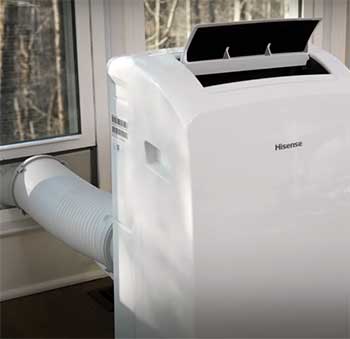
- Powerful Cooling for Small Spaces: At 5,000 BTU, this unit is specifically suited for smaller rooms (up to 150 sq. ft.), making it a good fit for apartments, home offices, or cozy bedrooms. With this power, I was able to bring down the temperature in my room by about 9°F in just 10 minutes—a noticeable difference on a hot day!
- Three Modes for All-Season Comfort: One of the standout features is the versatility of its modes. The cooling mode works as expected, keeping the room comfortable even when temperatures outside hit their peak. I also appreciated the fan mode, which keeps the air circulating without the chill. And if your space is prone to humidity, the dehumidifier mode will help you maintain a drier, healthier indoor environment.
- Maintenance-Free Operation: Unlike other portable ACs, which can require frequent draining, this Hisense model boasts a drain-free design. The built-in dehumidifier removes excess moisture from the air without collecting a bucketful of water. I found this feature particularly helpful since it meant I didn’t have to keep an eye on the unit or remember to empty it.
- Easy-to-Use Controls and Compact Design: The unit is user-friendly with an intuitive touch control panel that allows you to adjust settings effortlessly. There’s also a remote control included, making it convenient to operate from across the room. And thanks to its compact build, it’s perfect for tight spaces. I found it surprisingly lightweight and easy to move from room to room, with wheels that make relocating it hassle-free.
Pros And Cons of the Hisense Portable Air Conditioner
As with any product, there are some notable advantages and a few minor drawbacks that are worth mentioning.
Pros
- Affordable Price: For the cooling power it offers, the Hisense portable AC is priced competitively, which makes it a great value.
- User-Friendly Setup: Setting up the AC took less than 15 minutes. The kit includes everything needed for a secure window installation.
- No Manual Draining: The innovative drain-free design eliminates the need for manual emptying, which makes for hassle-free operation.
- Quiet Enough for Daily Use: Although not silent, the noise level is tolerable, even at night. Compared to other portable AC units, it’s on the quieter side.
- Compact and Easily Moved: This unit is small enough for any room, and its wheels make it simple to move around as needed.
Cons
- Moderate Cooling Capacity: While effective in small spaces, this AC isn’t powerful enough to cool larger areas, so it’s best kept to rooms within the suggested size limit.
- Instructions Could Be Clearer: I struggled slightly with the setup instructions, particularly with the adhesive foam and screws provided.
- Noise in Humid Conditions: When the dehumidifier mode is in use, the unit can get a bit louder.
- Potential Bug Entry Through Vent: The vent that comes with the window kit has larger openings, which could let in bugs if you’re in an area prone to them.
Getting The Most Out of Your Hisense Portable AC
To keep your Hisense portable AC running smoothly and effectively, here are some maintenance tips and tricks I’ve found helpful.
- Regular Filter Cleaning: The unit’s washable, removable filter makes it easy to maintain good air quality. I recommend washing the filter at least once a month, especially during heavy-use months. Just remove it, rinse it under cool water, let it dry completely, and reinstall.
- Use in Smaller Rooms for Best Results: This model is designed for small spaces, so it works best when kept within its recommended 150 sq. ft. range. In larger rooms, you may not get the cooling power you’re hoping for.
- Adjust Fan Speed and Mode for Quiet Cooling: If you’re sensitive to noise, running the fan at a lower speed can reduce noise levels. Switching to fan-only mode during less intense heat can help as well.
- Check for Condensation if in Humid Environments: While the Hisense unit is mostly drain-free, extremely humid environments can sometimes lead to excess water buildup. If this happens, consider elevating the unit and placing a container underneath to catch any drips.
Comparing Hisense To Other Portable AC Brands
When it comes to portable air conditioning, there are quite a few brands out there. So how does Hisense stack up against similar models from Vissani, Chilwell, and Pelonis?
Let’s break down the strengths and weaknesses to see where Hisense stands.
- Hisense Vs. Vissani Portable Air Conditioners
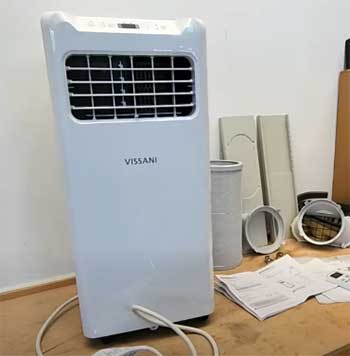
Vissani models are known for their affordable price points, often comparable to Hisense units.
While Vissani offers decent cooling power, they tend to be bulkier and may not fit as well in compact spaces.
Hisense has an edge when it comes to its slim, lightweight design, making it easier to move around and set up in smaller rooms.
Additionally, Hisense models often come with a drain-free design, which is not always a feature with Vissani.
If you’re looking for a unit that’s affordable and highly portable, Hisense offers a more compact, easy-to-move solution.
- Hisense Vs. Chilwell Portable Air Conditioners
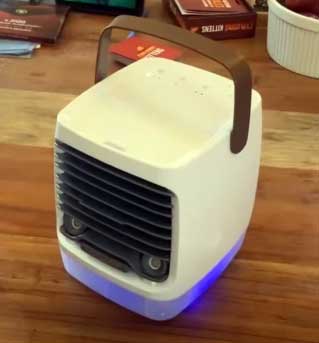
Chilwell portable ACs are a bit different, marketed as personal cooling units.
Chilwell models are generally ultra-compact, making them more suitable for individual use rather than cooling an entire room.
While they are energy-efficient and often quieter, they lack the power to cool larger spaces effectively.
In contrast, the Hisense portable AC, with its 5,000 BTU capacity, can comfortably handle small rooms up to 150 sq. ft.
So if you’re looking to cool an entire room rather than just a personal workspace or a small, direct area, Hisense offers more comprehensive coverage and functionality with its three modes (cooling, fan, and dehumidifier).
- Hisense Vs. Pelonis Portable Air Conditioners
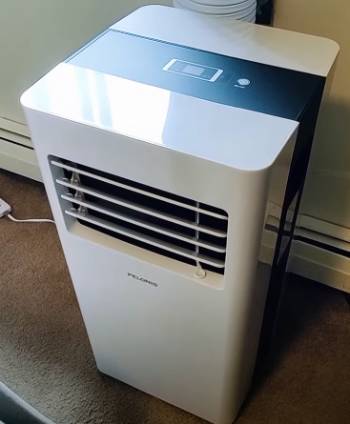
Pelonis portable ACs are known for their durability and cooling efficiency, often targeted toward mid-sized rooms.
However, Pelonis models tend to be noisier and may require more frequent maintenance, like manual drainage in high humidity.
Hisense, on the other hand, prioritizes ease of use with its drain-free design, making it more user-friendly, especially for smaller spaces.
Additionally, Hisense’s compact size and easy setup make it a great choice for bedrooms or apartments where space is at a premium, whereas Pelonis models might be better suited for larger areas.
Frequently Asked Questions (FAQ)
Yes, Hisense is a solid choice for those seeking an affordable, reliable portable AC. It’s compact, easy to use, and effective at cooling smaller spaces without requiring constant maintenance.
Generally, no. Hisense’s innovative design minimizes condensation buildup, eliminating the need for manual draining. In very humid environments, however, occasional draining might be necessary.
Hisense AC units are compact, affordable, and user-friendly. They offer various modes for cooling, ventilation, and dehumidification, making them versatile enough for year-round use.
The best portable AC depends on your needs. Hisense is ideal for smaller spaces and budget-conscious users. For larger rooms, brands like LG, Honeywell, or Whynter might offer models with more power.
Wrapping Up
After spending time with the Hisense AP0522CR1W Portable Air Conditioner, I can confidently say that it’s a worthwhile addition to any small room in need of cooling. Its compact size, multi-functionality, and easy maintenance make it a versatile choice.
Whether you’re in an apartment or just want a portable option for specific rooms, this Hisense model offers great value. So, if you’re looking for an affordable, efficient solution to beat the summer heat, consider giving Hisense a try. You won’t be disappointed.
